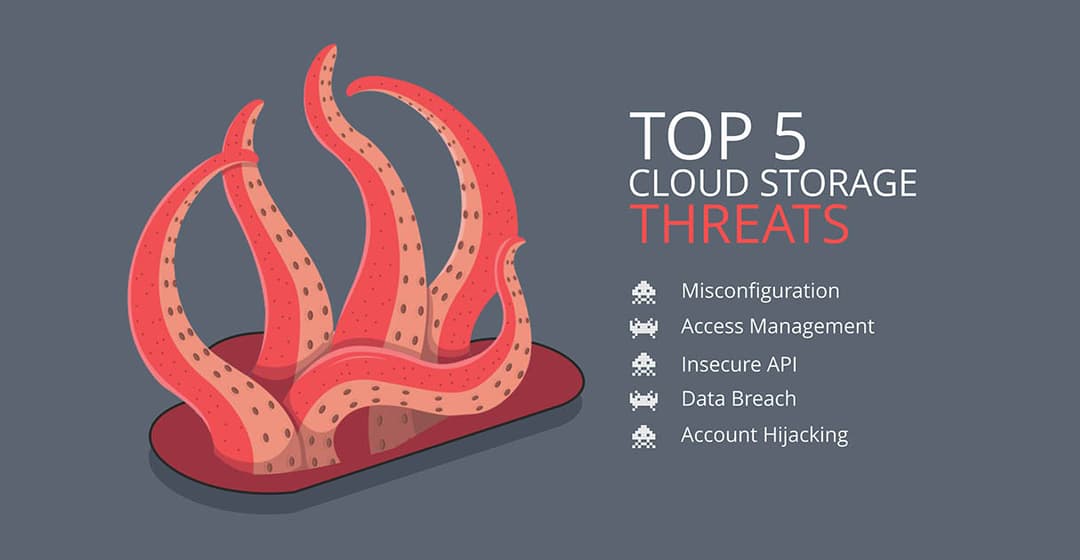The key objective of cloud storage has always been to provide an easily accessible and secure platform for data storing, exchanging, and editing for people globally. However, every coin has two sides. Cloud storage brings a lot many features to the table, but they are followed by inherent cyber threats.
In this article, you can glance over a few cyber threats that raise concern and how to deal with them.
1. Misconfiguration
Cyber threats can be harmful only if the security configurations of a cloud interface have loopholes. A single flaw in the portal’s security is enough to cause a data breach, after which the users on that particular cloud are at risk of losing their invaluable data forever.
Numerous factors may be responsible for weak security on a cloud. However, an organised and well-surveyed cloud infrastructure is fully capable of eliminating the concern of misconfiguration, thereby keeping the data of each and every user safe and secure.
2. Access management
The concern of access management can be effectively addressed by following a strict access policy and strong authentication practices. A sluggish approach with access management may allow unauthorised users to access, edit, and even delete data from the cloud.
Platforms that only bring Single-Factor Authentication (SFA) to the table are the most susceptible to an attack that might allow any random user to access and tamper with the users’ data. Any attacker will only need compromised credentials of a user to clear the SFA barrier.
3. Insecure API
An Application Programming Interface (API) is basically the interface that carries a cloud portal to the users around the globe. A cloud API will allot storage and network resources for applications on the cloud.
An insecure API could act as an open invitation to unauthorised users, who will be free to meddle with the portal and exfiltrate user data, without any hassle. Using a proper API framework, encrypted transmission, and a strong security layout, the cloud can be secured.
4. Data breach
Data Breach is undoubtedly one of the biggest concerns that revolves around any cloud storage platform. How easy is it to edit, collaborate, and save data on the cloud from anywhere these days? It is a piece of cake. Easy task saddled with a major risk factor on the side - Data Breach.
A questionable security model, coupled with careless exchange data links that are public, can allow any attacker to swoop into the cloud and steal the user’s data without breaking a sweat. Using a proper security model, strong encryption, and standard API framework will help a cloud platform dodge the Data Breach threats.
5. Account hijacking
Attackers do not always need to bypass bleak security to access a user’s data. Sometimes, on a Single-Factor Authentication (SFA) platform, a stolen password is enough to take control of an individual’s cloud storage.
An extremely strict security protocol needs to be followed to keep the account hijackers away. For starters, Two-Factor Authentication (TFA) comes in handy. Log in to your cloud after TFA verifies your identity, and you can continue working on a secure, encrypted server.
